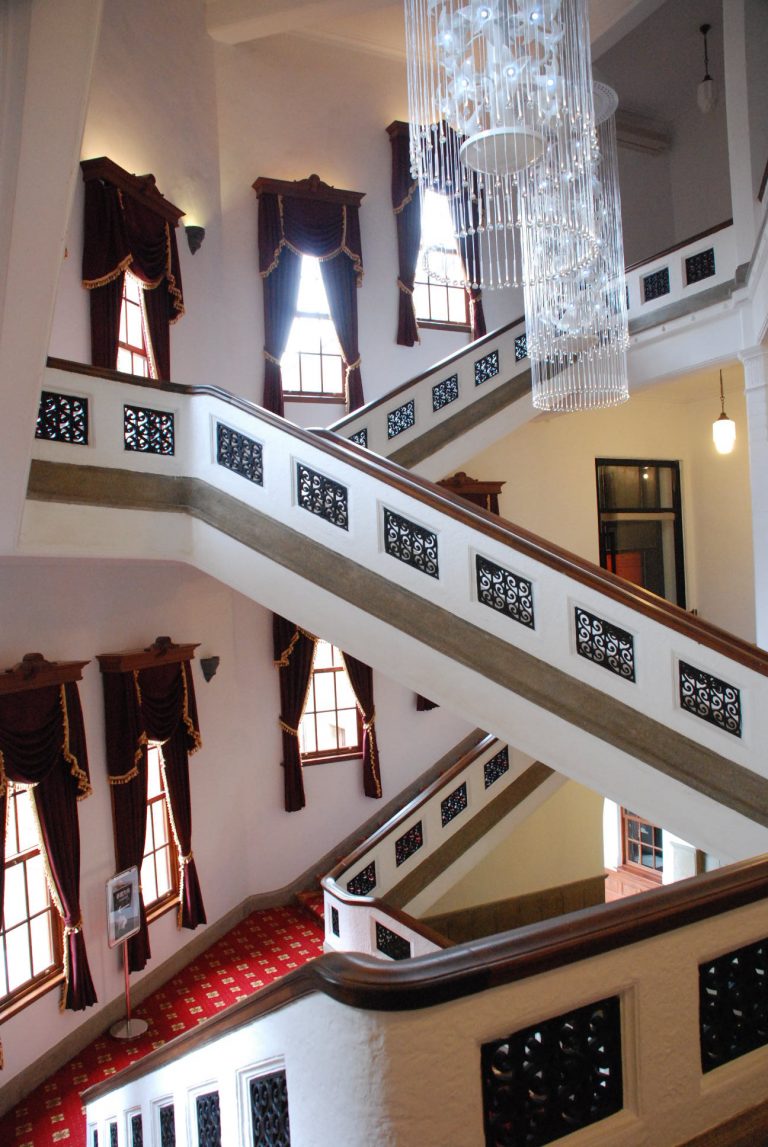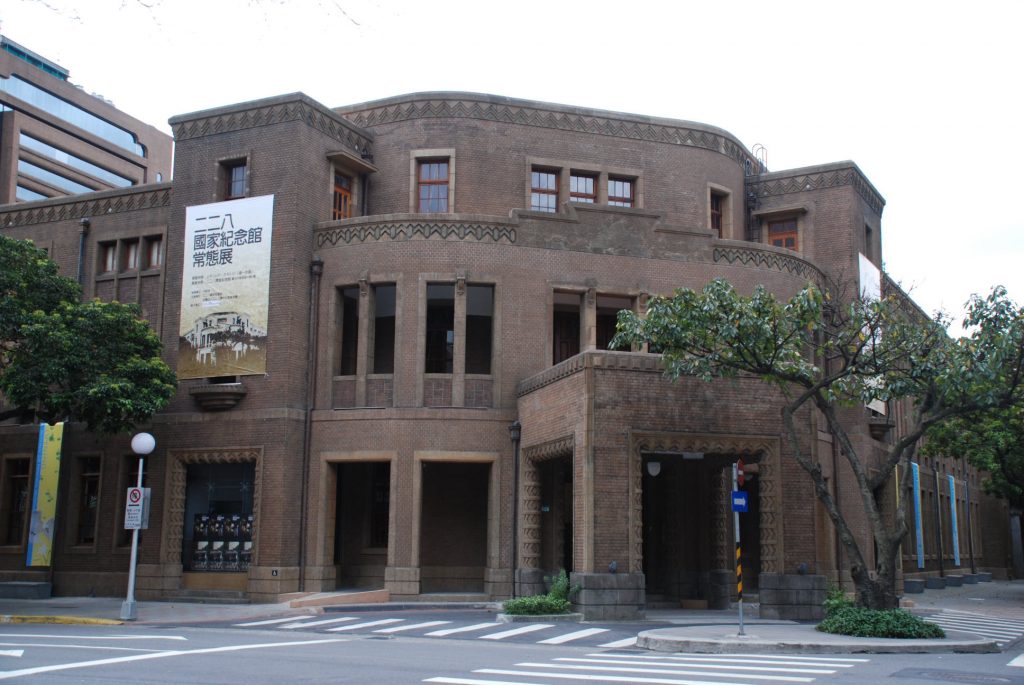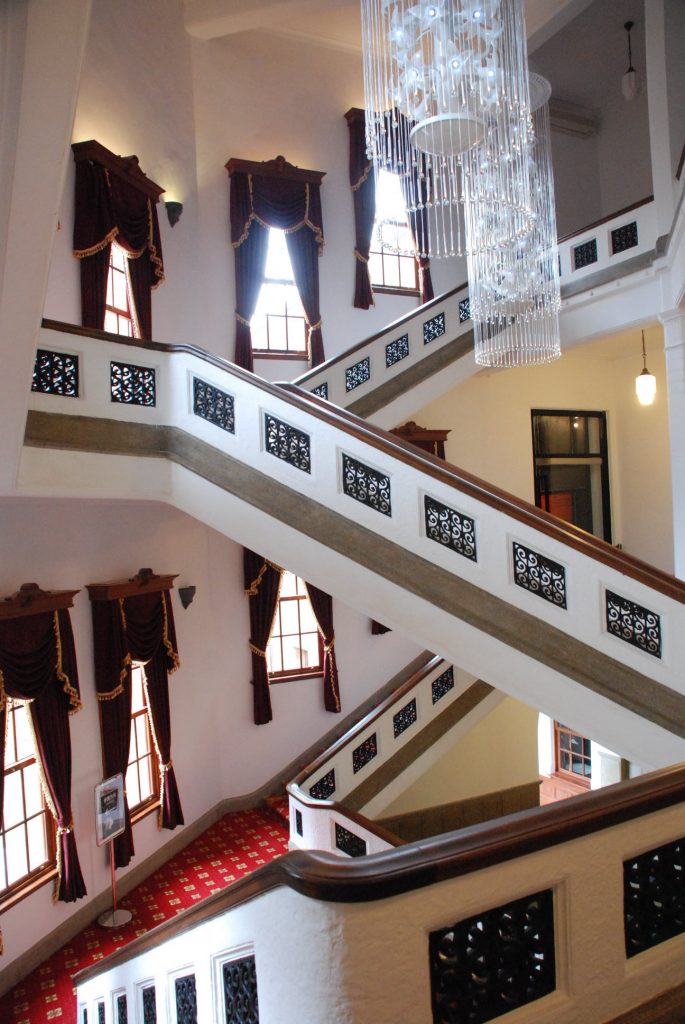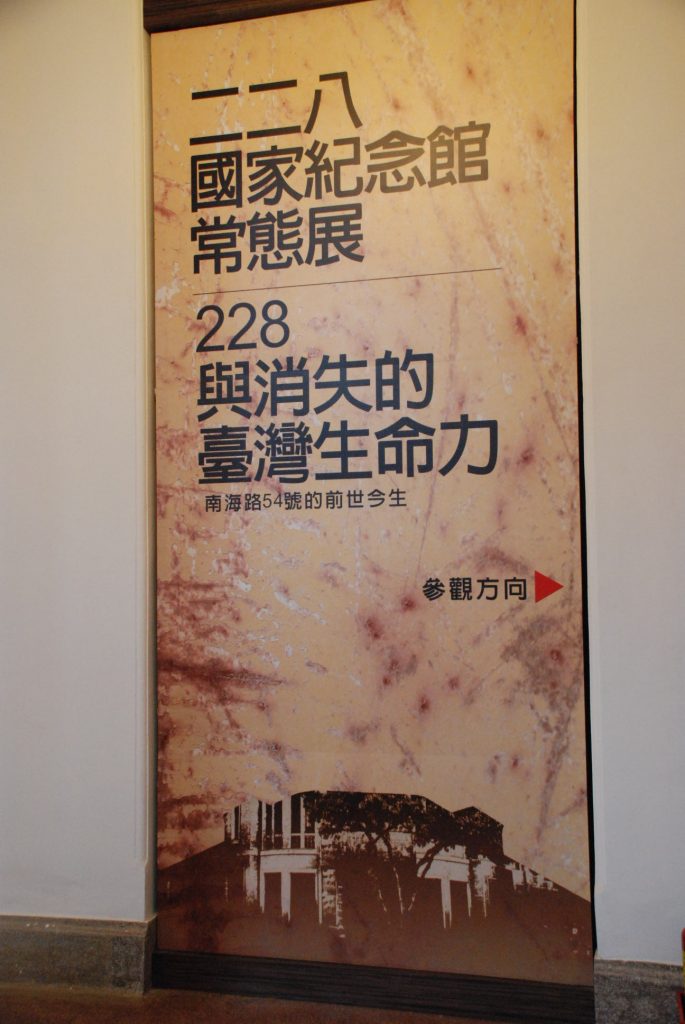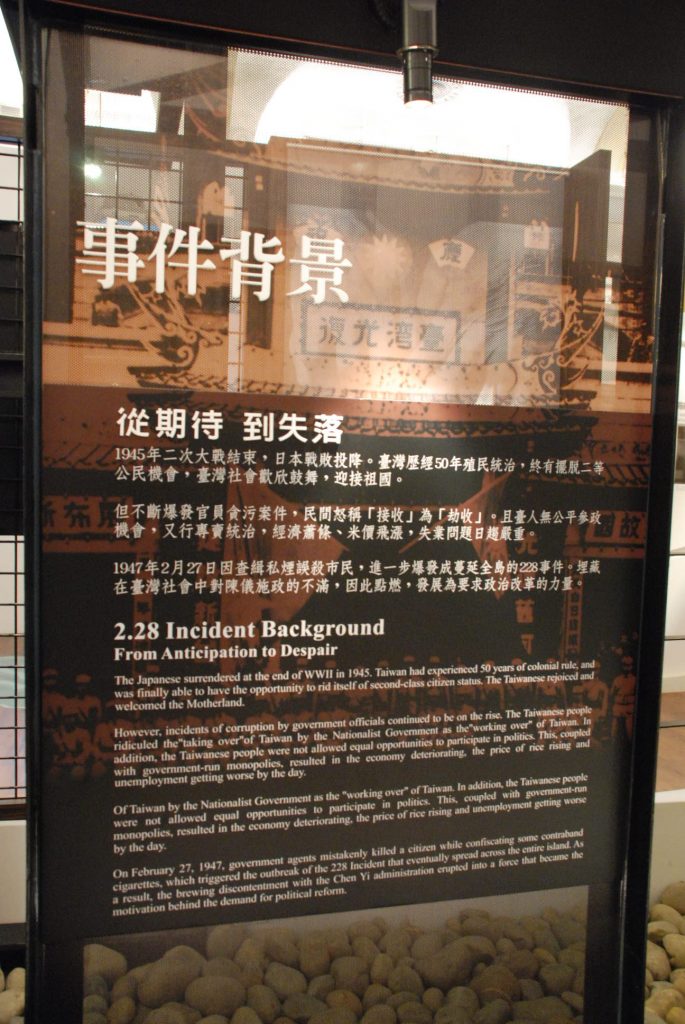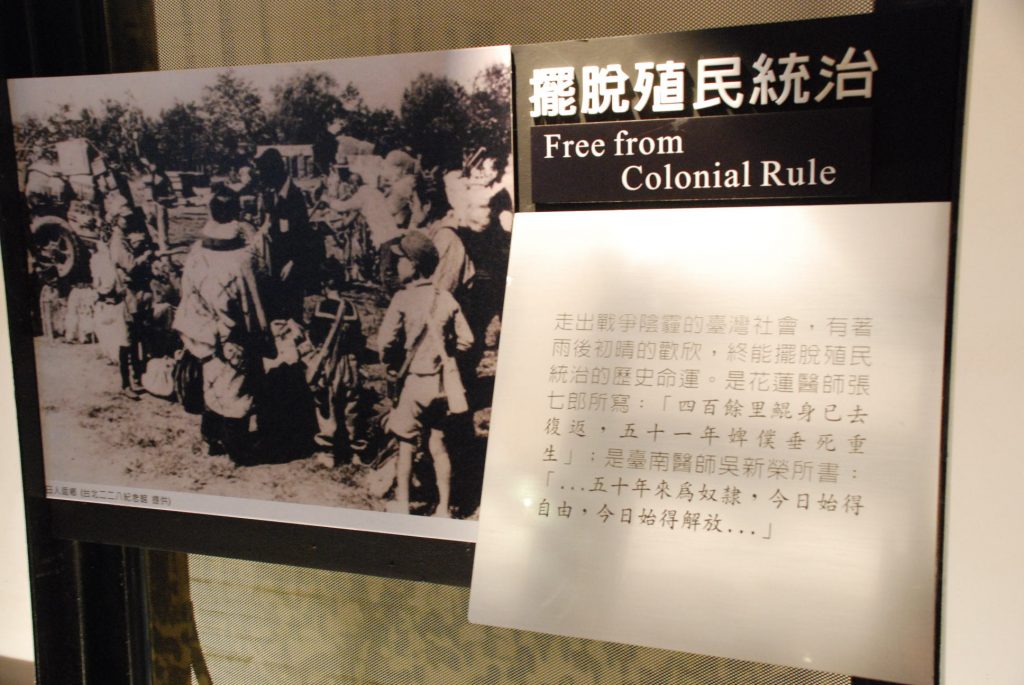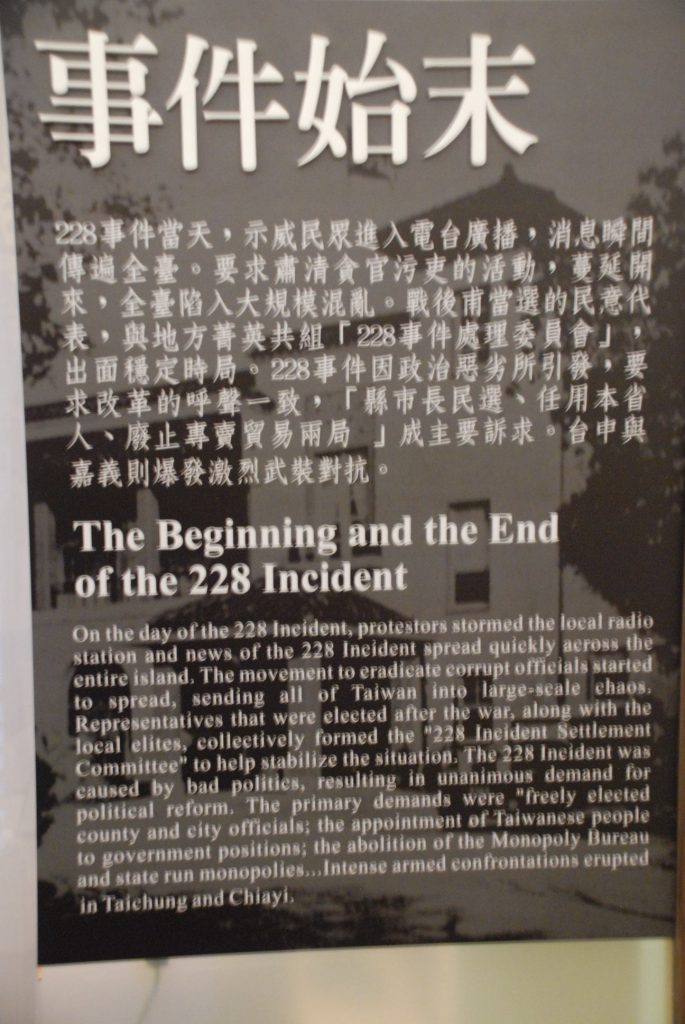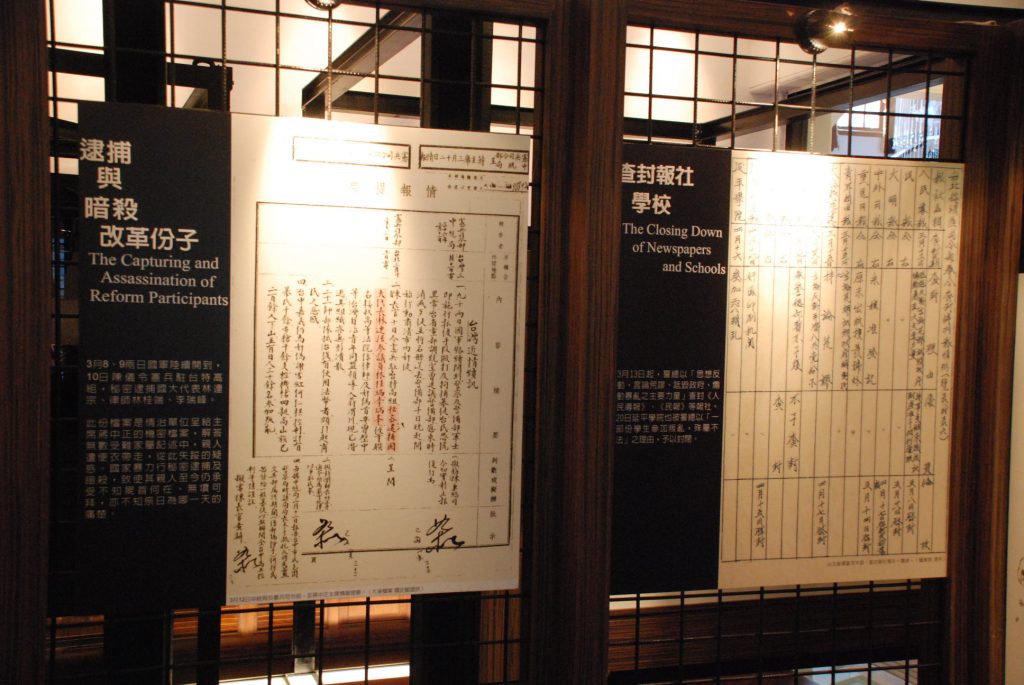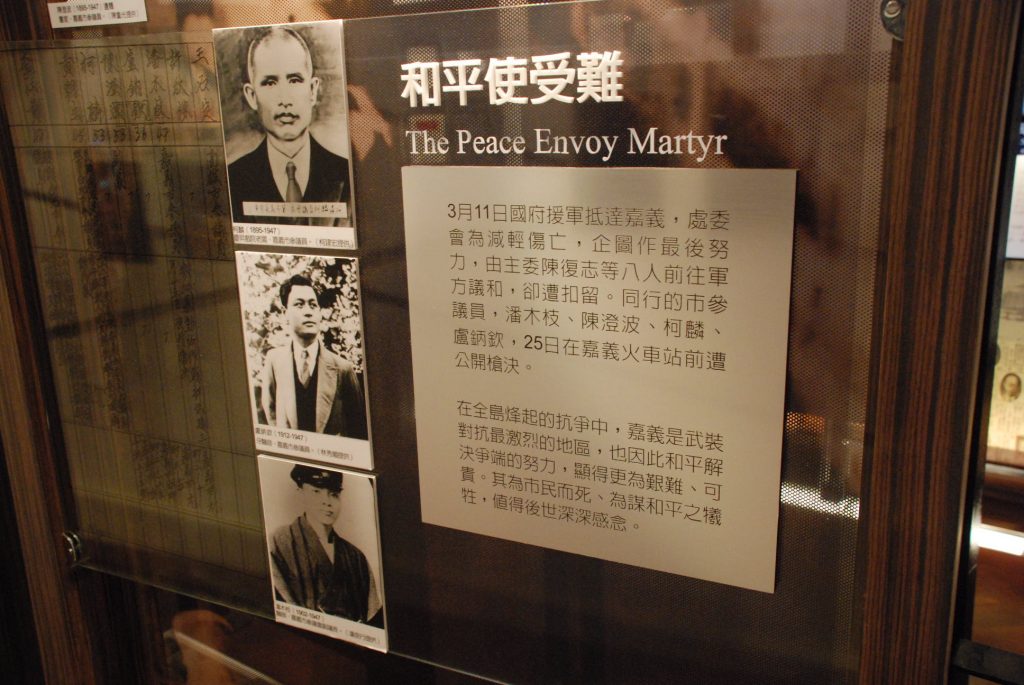The long awaited “National 2.28 Memorial Museum” was finally opened in Taipei on February 28. of 2011. It is now also the seat of the Memorial Foundation of 2.28, which is responsible for handling compensations for victims of 2.28. It had long been a wish of the dependants of victims of 2.28 to visibly raise commemoration of 2.28 to the national level by establishing a National 2.28 Memorial Museum. But what about the content of the museum?
By Günter Whittome, translater, interpretator and author based in Taipei
The long-awaited “National 2.28 Memorial Museum” was finally opened in Taipei on February 28. of 2011. It is now also the seat of the Memorial Foundation of 2.28, which is responsible for handling compensations for victims of 2.28. Before this date, there was only the Taipei 2.28 Memorial Museum, which had been opened during Chen Shui-bien’s term as DPP Mayor of Taipei (1994 to 1998) and some smaller monuments in other places in Taiwan, notably in Chia-i. It had long been a wish of the dependants of victims of 2.28 to visibly raise commemoration of 2.28 to the national level by establishing a National 2.28 Memorial Museum.
A suitable site for such a museum was selected during the last DPP government and works began to restore the historic building, which had been vacant for several years and was becoming increasingly derelict. The KMT majority in Parliament then blocked funds for the project and only released them after Ma Ying-jeou’s election to President. In the KMT’s view, time was ripe only when the term of the original board members of the Memorial Foundation of 2.28 ended and the Chairman and some of the board members were replaced by new members.
In what way is the building related to 2.28? At the time, it was the seat of the Provincial Consultative Assembly (省參議會), which only had the power to make “suggestions” to Taiwan’s governor, Chen Yi (陳儀). Its members came from Taiwan’s entrepreneurial and intellectual elite and during 2.28 they took on an active role in mediating between the people and Chen Yi. As such, many of them were also at the forefront of the “2.28 Settlement Committee” (二二八事件處理委員會), a body formed ad hoc with members from all parts of Taiwanese society to deal with the situation and to negotiate reforms with governor Chen Yi. The Settlement Committee held its meetings in Taipei Zhongshan Hall (中山堂), built during the Japanese colonial era for promoting Japanese language and culture. This would have been the most suitable building to commemorate 2.28, but it is used up to this day for various cultural events and the main hall, where the Settlement Committee convened, is up to this day named “Zhongzheng Auditorium” (中正廳, ie “Chiang Kai-shek Auditorium”)
The impressive building of the new National 2.28 Memorial Museum stands at the corner of Nanhai Rd. 54 and Chongqing S.Rd. (not far from MRT CKS Memorial Hall, Exits 1/2) and is open to the public from Tuesday to Sunday from 10 am to 5 pm.

Main entrance outside. 
Main staircase.
The museum currently features a permanent exhibition on 2.28 and a temporary exhibition on the history of the building. After the redesign of the 2.28 exhibition in the Taipei 2.28 Memorial Museum, which drew criticism from scholars and dependents of 2.28 victims for watering down the KMT’s and Chiang Kai-shek’s responsibility for 2.28, it promised to be interesting to see what the exhibition in the new National Memorial Museum had to offer.
At first sight, the exhibition makes a good impression. With everything under KMT control and funds released, no money was spared to realise an exhibition in the same modern design as in the Taipei 2.28 Museum including interactive multimedia elements. But what about the content?

Entrance to the permanent exhibition.
Some of the explanations are also found in English, sometimes only the headings were translated. In this respect there is still room for improvement. More significant are, of course, the contents directed at Taiwanese visitors. After more than twenty years of thorough historical research into 2.28, the basic facts cannot be denied, making any kind of blatant rewriting of history virtually impossible without provoking public outcry. However, some wordings and decisions to include or not include certain contents seem to reflect the intention not to convey to bad an impression of the KMT. The exhibition uses traditional KMT terms such as 「光復」 (‘glorious restoration’) for the takeover of Taiwan by the KMT in 1945 and「祖國」(‘motherland’, ie China). Governor Chen Yi is mainly held responsible for 2.28 and only brief mention is made of Chiang Kai-shek, who approved the sending of troops to Taiwan to crush the movement.

Introduction in Chinese and English. 
Free from being “slaves for 50 yrs.”, acc. to a citation in the Chinese text. Having been “Japanese slaves” was used as a derogatory term towards the Taiwanese by the KMT in the aftermath of 2.28. 
Part of the main exhibition hall. 
Explaining some background of 2.28, using traditional KMT terms such as 「光復」(‘glorious restoration’) for the takeover of Taiwan by the KMT in 1945 and「祖國」(‘motherland’, ie China) 
Beginning and the end of 2.28”: inadequate translation, should rather be “Outline of 2.28”. 
Presentation of some of the most prominent members of the reform movement incl. relevant texts.

Those responsible were Chen Yi and the National Government. The KMT as the party that ran the state, however, is not mentioned throughout the exhibition. 
Under the heading of “double-sided tactics, Part 2”: handwritten document by Chiang Kai-shek from 5 March granting Chen Yi’s request to send troops to Taiwan. 
“Double-sided tactics, Part 5”: on one of the worst massacres in suppressing 2.28, which occurred in Keelung, citing British eyewitness “Clark”, who witnessed random shooting from automatic weapons lasting 2 hrs. 
Secret service document dated 12 March informing Chiang Kai-shek of secret arrests of prominent Taiwanese / Document by the Military Command of Taiwan on the closing down of newspapers and schools beginning on 13 March. 
Councillors who tried to mediate between the troops and the people in Chia-i to avoid further casualties were executed in front of Chia-i railway station. 
Part of the main exhibition hall with photos and data of 2.28 victims.
While visitors can acquire a certain understanding of events and the aftermath of 2.28, the main shortcoming is the complete absence of mentioning any responsibility of the KMT as the party that ran the state and the nearly complete absence of historic context.
The deep effect that 50 years of Japanese rule had not only on the material life of the Taiwanese but also on their mindset contributed to the fast alienation from the KMT administration after 1945. There is more to it than only being “freed from colonial rule”. This amounts to ignoring one of the important forces that shaped Taiwan’s identity. A further important consequence of 2.28 was that it triggered the Taiwan Independence Movement as Taiwanese intellectuals came to the conclusion that Taiwan would only have a future by severing all ties with China. As this is something that the KMT doesn’t like to be reminded of, this aspect is completely absent in the exhibition.

Photo showing one of the first open activities to commemorate 2.28 (26 Febr. 1987, Chia-i railway station).
This last picture is the only one that provides a hint of the many years of struggle for open discussion and commemoration of 2.28 and for compensation of the victims. This is an important part of Taiwan’s democratisation process that certainly deserves more attention. This also applies to the book section that only exhibits a few volumes of the vast 2.28 literature that has been published since the 1980s.
It remains to be seen whether the exhibition can evolve to provide a more complete picture of 2.28 that includes aspects that are not to the liking of the KMT: the Japanese legacy before 2.28, the challenges from the democracy movement since the 1980s and its significance for the Taiwan independence movement. Only in this way will visitors be able to see 2.28 as an important step in shaping Taiwan’s identity rather than an isolated historic incident.

